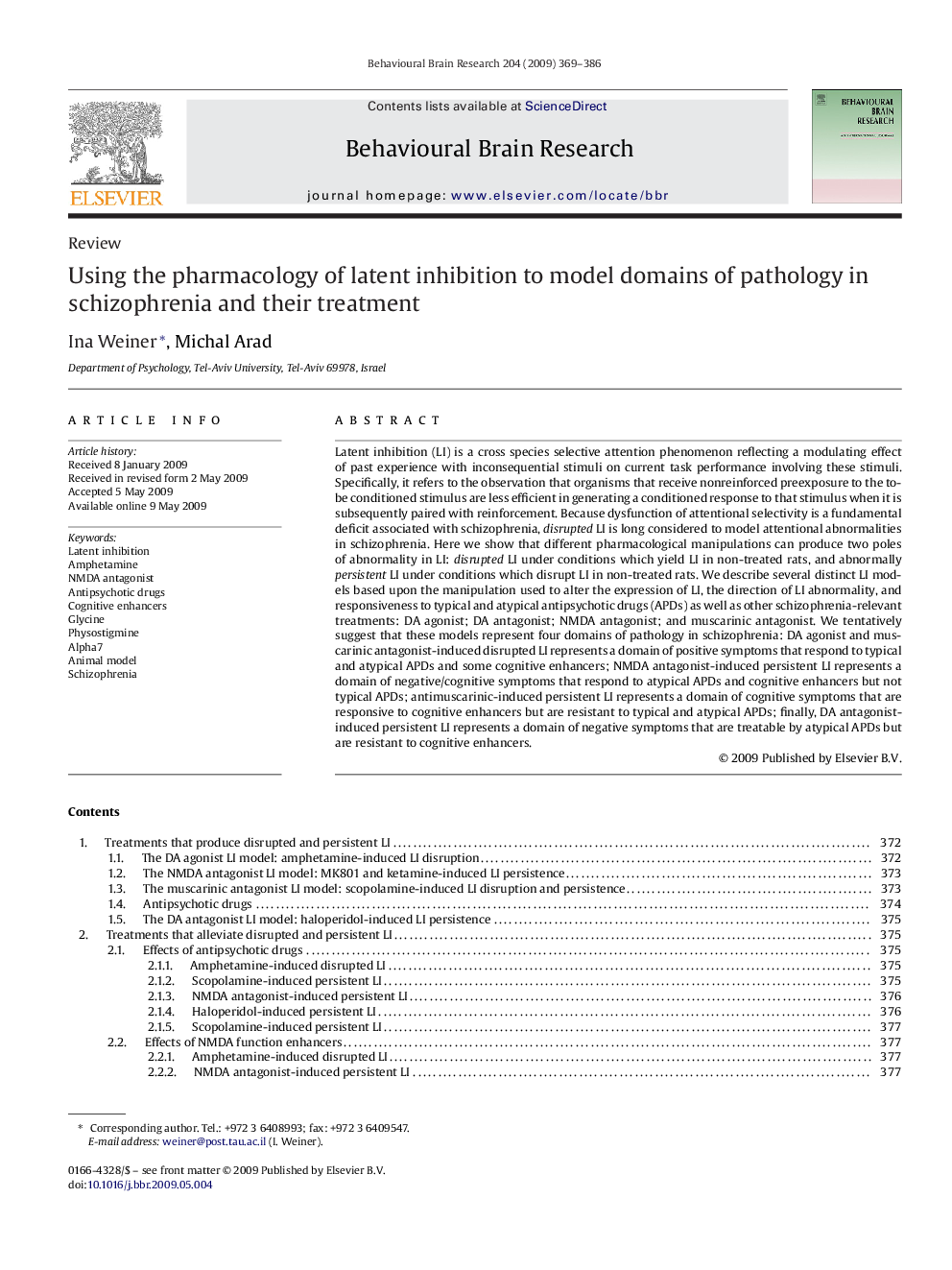| کد مقاله | کد نشریه | سال انتشار | مقاله انگلیسی | نسخه تمام متن |
|---|---|---|---|---|
| 4314562 | 1290040 | 2009 | 18 صفحه PDF | دانلود رایگان |

Latent inhibition (LI) is a cross species selective attention phenomenon reflecting a modulating effect of past experience with inconsequential stimuli on current task performance involving these stimuli. Specifically, it refers to the observation that organisms that receive nonreinforced preexposure to the to-be conditioned stimulus are less efficient in generating a conditioned response to that stimulus when it is subsequently paired with reinforcement. Because dysfunction of attentional selectivity is a fundamental deficit associated with schizophrenia, disrupted LI is long considered to model attentional abnormalities in schizophrenia. Here we show that different pharmacological manipulations can produce two poles of abnormality in LI: disrupted LI under conditions which yield LI in non-treated rats, and abnormally persistent LI under conditions which disrupt LI in non-treated rats. We describe several distinct LI models based upon the manipulation used to alter the expression of LI, the direction of LI abnormality, and responsiveness to typical and atypical antipsychotic drugs (APDs) as well as other schizophrenia-relevant treatments: DA agonist; DA antagonist; NMDA antagonist; and muscarinic antagonist. We tentatively suggest that these models represent four domains of pathology in schizophrenia: DA agonist and muscarinic antagonist-induced disrupted LI represents a domain of positive symptoms that respond to typical and atypical APDs and some cognitive enhancers; NMDA antagonist-induced persistent LI represents a domain of negative/cognitive symptoms that respond to atypical APDs and cognitive enhancers but not typical APDs; antimuscarinic-induced persistent LI represents a domain of cognitive symptoms that are responsive to cognitive enhancers but are resistant to typical and atypical APDs; finally, DA antagonist-induced persistent LI represents a domain of negative symptoms that are treatable by atypical APDs but are resistant to cognitive enhancers.
Journal: Behavioural Brain Research - Volume 204, Issue 2, 7 December 2009, Pages 369–386